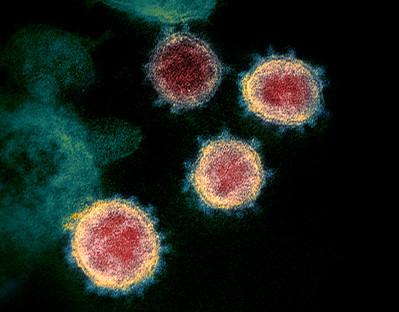Vaccines help prevent infection by preparing the body to fight foreign invaders (such as bacteria, viruses, or other pathogens). All vaccines introduce into the body a harmless piece of a particular bacteria or virus, triggering an immune response. Most vaccines contain a weakened or dead bacteria or virus. However, scientists have developed a new type of vaccine that uses a molecule called messenger RNA (mRNA) rather than part of an actual bacteria or virus. Messenger RNA is a type of RNA that is necessary for protein production. Once cells finish making a protein, they quickly break down the mRNA. mRNA from vaccines does not enter the nucleus and does not alter DNA.
mRNA vaccines work by introducing a piece of mRNA that corresponds to a viral protein, usually a small piece of a protein found on the virus’s outer membrane. (Individuals who get an mRNA vaccine are not exposed to the virus, nor can they become infected with the virus by the vaccine.) By using this mRNA, cells can produce the viral protein. As part of a normal immune response, the immune system recognizes that the protein is foreign and produces specialized proteins called antibodies. Antibodies help protect the body against infection by recognizing individual viruses or other pathogens, attaching to them, and marking the pathogens for destruction. Once produced, antibodies remain in the body, even after the body has rid itself of the pathogen, so that the immune system can quickly respond if exposed again. If a person is exposed to a virus after receiving mRNA vaccination for it, antibodies can quickly recognize it, attach to it, and mark it for destruction before it can cause serious illness.
Like all vaccines in the United States, mRNA vaccines require authorization or approval from the Food and Drug Administration (FDA) before they can be used. Currently vaccines for COVID-19, the disease caused by the SARS-CoV-2 coronavirus, are the only authorized or approved mRNA vaccines. These vaccines use mRNA that directs cells to produce copies of a protein on the outside of the coronavirus known as the “spike protein”. Researchers are studying how mRNA might be used to develop vaccines for additional diseases.
Scientific journal articles for further reading
Jain S, Venkataraman A, Wechsler ME, Peppas NA. Messenger RNA-based vaccines: Past, present, and future directions in the context of the COVID-19 pandemic. Adv Drug Deliv Rev. 2021 Oct 9;179:114000. doi: 10.1016/j.addr.2021.114000. Epub ahead of print. PMID: 34637846; PMCID: PMC8502079.
Verbeke R, Lentacker I, De Smedt SC, Dewitte H. The dawn of mRNA vaccines: The COVID-19 case. J Control Release. 2021 May 10;333:511-520. doi: 10.1016/j.jconrel.2021.03.043. Epub 2021 Mar 30. PMID: 33798667; PMCID: PMC8008785.
Microscopic image of SARS-CoV-2, the virus that causes COVID-19. Spike proteins are seen surrounding the outer membrane of each virus particle.

Topics in the Gene Therapy and Other Medical Advances chapter
The information on this site should not be used as a substitute for professional medical care or advice. Contact a health care provider if you have questions about your health.


